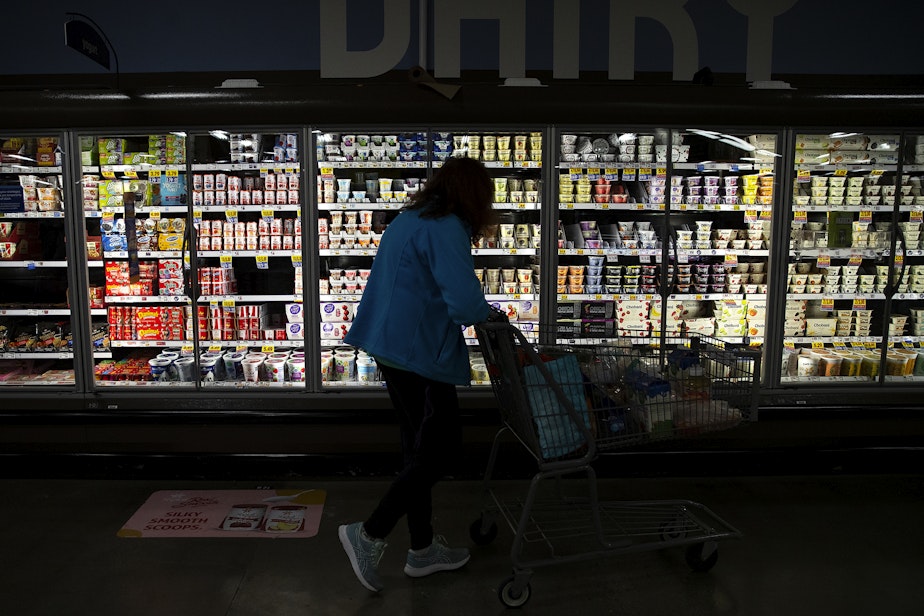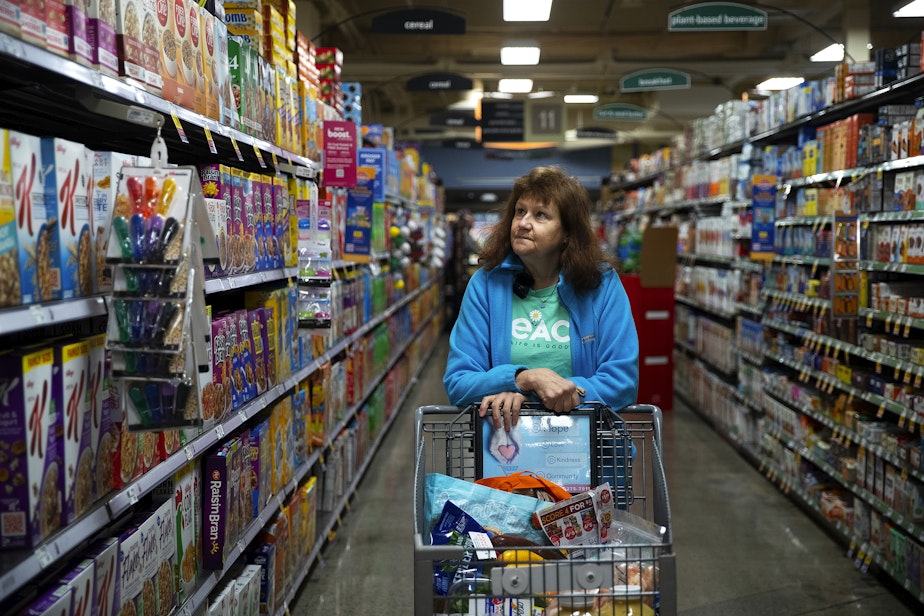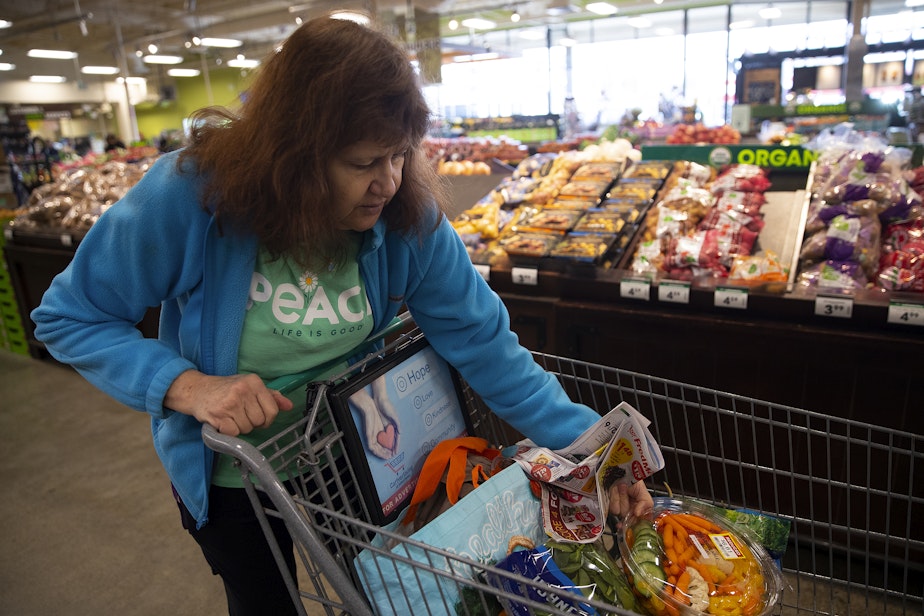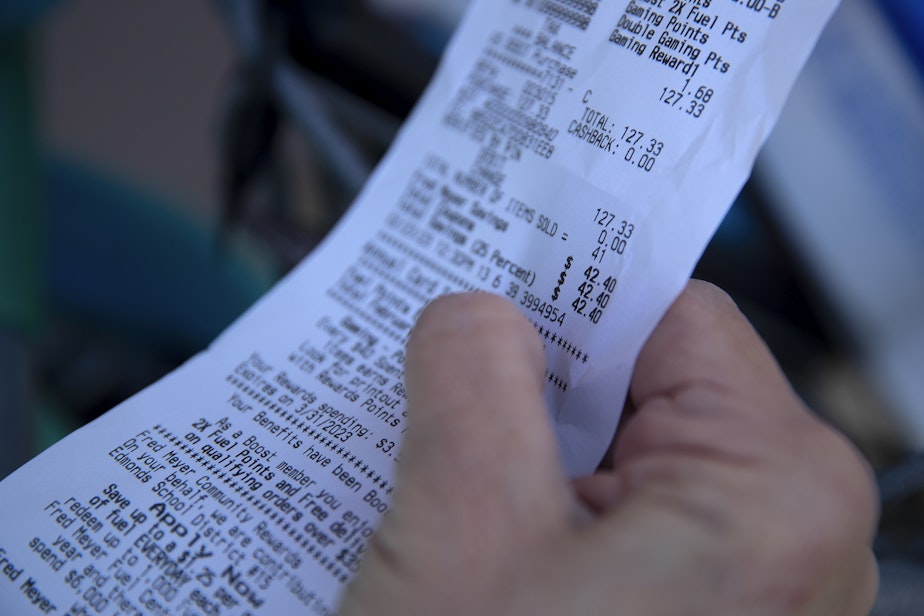Are we nearing the end of the grocery store experience?

Grocery shopping is something we all do, and it's highly personal. People have strong feelings about where and how they get their food. The proposed $25 billion merger of two of the nation's largest supermarket chains has the potential to affect how millions of customers buy their groceries.
"State of the Cart" is a four-part series with each story looking at the proposed merger through a different lens — its impact on consumers, on workers, on the communities themselves, and on our shopping habits.
T
here are two kinds of shoppers—those who hate doing it and those who love it.
For Diane Martin Rudnick, grocery shopping is an adventure. She has a keen eye for mark downs. We meet at the Fred Meyer in Shoreline late Thursday morning. We’re strolling through the aisle of packaged produce when a bowl of cut up baby carrots, cauliflower, and bell peppers catches her eye.
“This is great,” Rudnick said. “Now I just need to decide what I’m going to do with it.”
The bowl has a sell-by date in two days and has been discounted. It goes into the cart. Rudnick says these unexpected finds are part of the fun.
Sponsored

Shoppers like Rudnick, already worn down with supply chain issues and rising food costs, are worried after Kroger and Albertsons announced their merger last fall. Company officials say the nearly $25 billion deal is an important step to stay competitive.
The Fred Meyer store in Shoreline is part of the Kroger chain, and one of 330 stores that could close as a result of the merger. Rudnick hopes that won’t be the case.
“I kind of know the rhythm of the store," she said. "Like I know when they’re going to mark stuff down.”
Sponsored

It’s also one of five stores near her that she likes to frequent. For Rudnick, part of the joy is having a variety of choices of where to shop.
A larger, more complex, more competitive industry
Albertsons and Kroger's merger announcement set off a public uproar—from lawsuits contesting shareholder payouts, to members of Congress questioning the merger’s timing and intent.
Sponsored
At a November hearing before a U.S. Senate subcommittee, Kroger CEO Rodney McMullen recalled a time when families would make a weekly trip to their neighborhood store. But those times have passed, he said.
“Customers purchase food everywhere—from Walmart and Trader Joe’s to Costco and Aldi, to Dollar General, 7-Eleven, Walgreens and restaurants, for example,” McMullen said.
The industry today, he noted, is larger, more complex and more competitive.
“We operate on razor thin margins," McMullen said. "This merger will give us the flexibility, national footprint, and digital capabilities to compete more effectively.”
What’s driving the merger is competition from two rivals, said Kevin Boeh, professor of finance and business economics at the University of Washington.
Sponsored
“One is Walmart, with their incredible purchasing power, their size, their distribution network,” Boeh said.
The other is Amazon.
“Amazon has become an incredible powerhouse in grocery delivery,” he said.
Boeh explained the merger is about positioning the companies to survive in the long run.
"Wayne Gretzky, the hockey player, said, 'I don’t want be where the puck is, I want to be where the puck is going to be,'" he said. "Where the puck will be is competing with Walmart and Amazon. This is a mechanism to be able to do that."
Sponsored
The last time two large grocery mergers merged was in 2015 when Albertsons acquired Safeway. To avoid creating a monopoly, Albertsons sold off 146 stores on the West Coast, including Washington state. Haggen, a regional chain based in Bellingham, bought the stores with hopes to expand. But that expansion was short-lived. In less than a year, Haggen filed for bankruptcy. In the process, Albertsons bought back most of the stores. But not all of them returned to operation.
This is the kind of scenario customers fear about the current merger, despite assurances from both companies that this time will be different.
“I think we have the history in our mind,” Boeh said. “I think the judges and the people at the Federal Trade Commission know about that history. And they’re going to be keenly looking at that history to make sure it doesn’t repeat itself.”

And it’s not just regulators who’ll keep close tabs. Shoppers like Rudnick are also watching. She’s concerned, not just about the merger’s potential impact on prices, but also on the people who work there.
“When I’m shopping, I’m voting with my dollars," Rudnick said. "A lot of people I happen to know a lot because I talk with people, they’re single parents and as a single parent myself, I feel a connection.”




